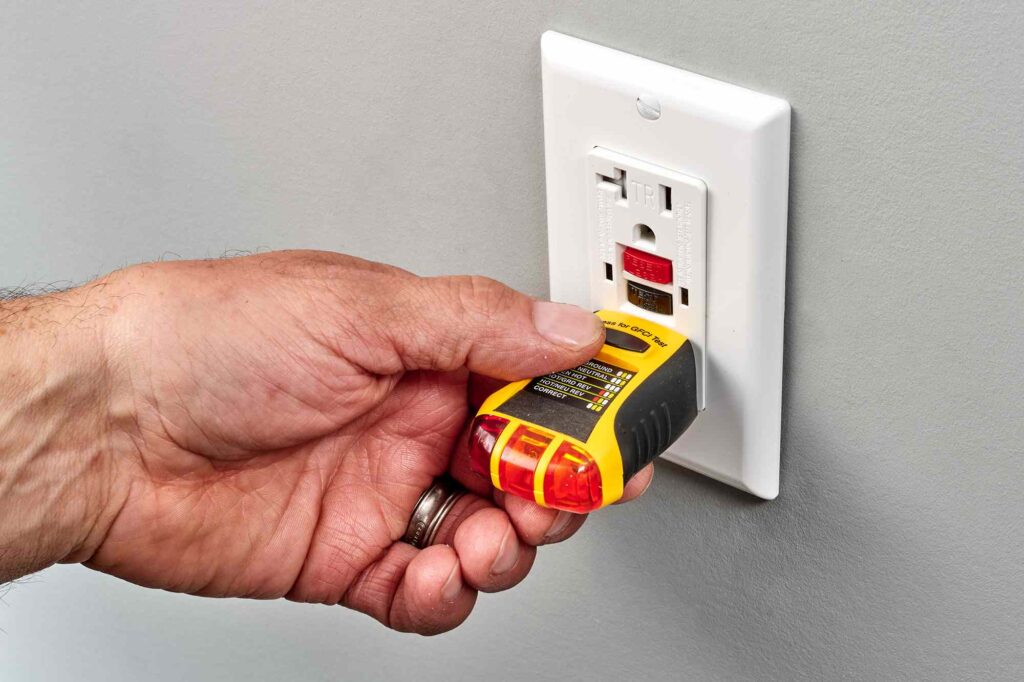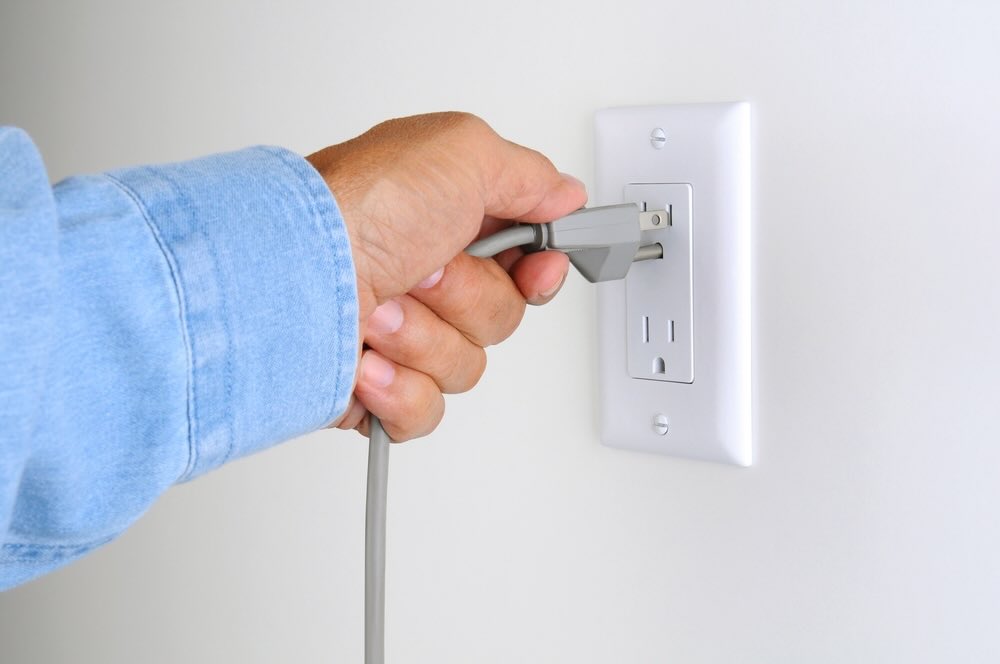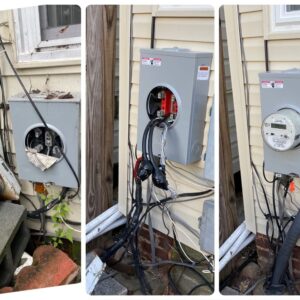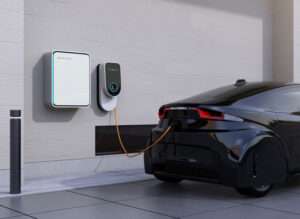Electrical Outlet Repair and Replacement in Chesterfield, Richmond, VA
For electrical outlet repair, replacement, and maintenance, and fixing power issues indoors or outdoors, opt for expert outlet troubleshooting, installation, and wall socket repair services. Ensure your outlets are in top condition by addressing any power or socket issues promptly.
Electrical outlets are essential components in any home or business, providing the power needed to run various appliances and devices. When an outlet malfunctions or stops working, it can disrupt your daily routine and pose a safety hazard. Hiring professionals for outlet repair, replacement, and maintenance can help ensure that your electrical system remains safe and functional.
Whether you need indoor or outdoor outlet services, expert technicians can diagnose and fix any issues efficiently. By investing in reliable outlet troubleshooting and installation, you can enjoy a seamlessly powered space without interruptions.
Electrical Outlet Repair
When it comes to household safety, ensuring the proper function of electrical outlets is crucial. Faulty outlets can pose serious hazards, including electric shocks, fires, and damage to electrical devices. Therefore, it’s crucial to address any issues with electrical outlet repair promptly. Here, we’ll discuss common outlet problems, signs of a faulty outlet, and DIY outlet repair methods to help you keep your home safe and functional.
Common Outlet Problems
Common outlet problems can range from minor issues, such as loose plugs, to more serious concerns like sparking or overheating. Understanding the most frequent issues can aid homeowners in identifying and resolving outlet problems before they become hazardous. Some common outlet problems include:
- Loose or worn-out outlets
- Sparking or sizzling sounds when plugging in devices
- Overheating outlets
- Intermittent power supply
- Dead outlets
Signs Of A Faulty Outlet
Identifying the signs of a faulty outlet is essential for maintaining a safe electrical system in your home. Some common signs that an outlet may be faulty include:
- Discoloration or scorch marks around the outlet
- Frequent circuit breaker trips or blown fuses
- Warm or hot outlet cover plates
- Devices that frequently unplug on their own
Diy Outlet Repair
Addressing minor outlet issues through DIY repair can help prevent more significant problems down the line. However, it’s vital to exercise caution and follow safety precautions when working with electrical outlets. Some DIY repair tasks for outlets include:
- Tightening loose outlet connections
- Replacing worn-out outlet cover plates
- Testing and resetting GFCI outlets
- Replacing damaged or malfunctioning outlets
Outlet Replacement
Outlet Replacement
When considering outlet replacement, it is essential to know the warning signs and understand the process to ensure safety and functionality.
When To Replace An Outlet
Replace outlets if there are evident signs of damage, such as scorch marks, loose plugs, or intermittent power.
Types Of Outlets
- Standard outlets: Most common in homes
- GFCI outlets: Used in areas prone to moisture
- AFCI outlets: Designed to prevent fires
Steps To Replace An Outlet
1. Turn off power to the outlet at the circuit breaker.
2. Unscrew the outlet cover plate and remove.
3. Unscrew the outlet from the electrical box and disconnect wires.
4. Attach wires to the new outlet and secure it into the electrical box.
5. Replace the cover plate and turn the power back on.
Outlet Maintenance
Outlet maintenance is crucial for ensuring the safety and functionality of your electrical system. By regularly maintaining your electrical outlets, you can prevent potential hazards and extend the lifespan of your outlets.
Importance Of Outlet Maintenance
Regular maintenance helps prevent electrical fires and ensures your outlets are working efficiently.
How To Maintain Electrical Outlets
- Inspect outlets for any visible damage
- Test outlets with a voltage tester
- Keep outlets clean and free of dust or debris
- Avoid overloading outlets with too many devices
Professional Maintenance Services
Professional electricians offer maintenance services that include thorough inspections and repairs.
By investing in professional maintenance services, you can have peace of mind knowing that your electrical outlets are in top condition.
Fixing Electrical Outlets
Fixing electrical outlets is an essential part of maintaining a safe and functional electrical system in your home. Whether you’re experiencing power issues, outdated outlets, or simply need to troubleshoot and repair an electrical outlet, it’s important to address these matters promptly and effectively to ensure the safety and convenience of your household electrical system.
Troubleshooting Outlet Issues
When encountering issues with electrical outlets, it’s crucial to take a systematic approach to troubleshooting. Begin by identifying the specific outlet or outlets that are experiencing the problem and systematically evaluate the possible causes.
Common problems include loose connections, damaged wiring, and overloaded circuits. By testing the outlet with a voltage tester or multimeter, you can determine if the issue lies with the outlet, the wiring, or elsewhere in the circuit.
Common Outlet Repairs
Repairing electrical outlets often involves addressing loose connections, replacing damaged outlets, and correcting faulty wiring. It’s important to turn off the power at the breaker before attempting any repairs and, if necessary, seek professional assistance to ensure the work is performed safely and effectively.
In some cases, upgrading outlets to GFCI (Ground Fault Circuit Interrupter) or AFCI (Arc Fault Circuit Interrupter) outlets may be necessary to enhance safety and meet current electrical code requirements.
Safety Considerations
When working with electrical outlets, always prioritize safety. Turn off the power to the outlet at the breaker and test the outlet to confirm it’s de-energized before beginning any repairs. Use insulated tools and follow proper procedures to avoid electrical shocks or hazardous situations.
If you encounter electrical issues that are beyond your expertise, it’s essential to consult a qualified electrician to address the problem professionally and ensure the safety of your electrical system.
Outlet Troubleshooting
Electrical outlets play a crucial role in our daily lives, providing power to our electronics and appliances. However, when these outlets stop working, it can be frustrating and inconvenient. To help you overcome this challenge, this section will guide you through outlet troubleshooting, ensuring that you can identify and resolve common outlet problems effectively.
Identifying Outlet Problems
Before you start troubleshooting your electrical outlet, it’s essential to identify the specific problem you are dealing with. Here are some signs to look out for:
- No power output when you plug in a device
- Intermittent power supply
- Sparks or burning smell from the outlet
- Loose or wobbly outlet
Testing Outlet Voltage
If you suspect an issue with your electrical outlet, it’s crucial to test its voltage to determine the problem. Here’s how you can do it:
- Turn off the power: Begin by turning off the circuit breaker that controls the outlet you want to test.
- Use a voltage tester: To test the voltage, carefully place the voltage tester probes on the outlet’s terminal screws or in the slots. Ensure the tester detects voltage.
- Analyze the results: If the tester shows voltage, the outlet is functioning correctly, and the issue may lie with the device you are plugging in. However, if there is no voltage, there might be a problem with the wiring or the outlet itself.
Troubleshooting Tips
Once you have identified the outlet problem and confirmed the absence of voltage, it’s time to troubleshoot and resolve the issue. Follow these tips to rectify common outlet problems:
- Reset tripped circuit breaker: If the outlet has no power output, check the circuit breaker box for any tripped breakers. Resetting the breaker may solve the issue.
- Replace the outlet: If the voltage test indicates a problem with the outlet, it might be necessary to replace it. Before doing so, ensure the power is turned off and seek professional help if needed.
- Inspect loose connections: Wobbling or loose outlets can be a result of loose connection screws. Tighten the screws securely to ensure a proper electrical connection.
- Check for signs of damage: Examine the outlet for any signs of damage, such as burn marks or melted plastic. If you notice any, it’s crucial to replace the outlet promptly.
- Seek professional assistance: If you are unsure about the troubleshooting process or encounter complex electrical issues, it’s best to consult a qualified electrician. They have the expertise to handle complex problems safely.
By following these outlet troubleshooting tips, you can often identify and resolve common electrical outlet problems. However, always prioritize your safety and consult a professional when needed.

Wall Outlet Repair
When it comes to maintaining a safe and functional electrical system in your home or workplace, addressing any issues with your wall outlets is crucial. Faulty or damaged outlets can not only hinder your daily activities but also pose potential risks, including electrical shock or fire hazards. In this article, we will discuss the importance of wall outlet repair and the various aspects involved in ensuring your outlets are in top-notch condition.
Repairing Damaged Outlet Covers
Your outlet covers not only protect the electrical components but also play an important role in maintaining overall aesthetics. Damaged or broken outlet covers not only look unsightly but can also expose the electrical wiring and pose safety hazards. To repair damaged outlet covers:
- Start by turning off the power supply to the outlet by flipping the corresponding circuit breaker in the main electrical panel.
- Gently remove the cover plate using a screwdriver and inspect it for cracks, chips, or any other visible damage.
- If the cover is slightly damaged, you can repair it by using epoxy or adhesive suitable for the material.
- If the cover plate is beyond repair, replace it with a new one. Ensure you choose a cover plate that matches the style and size of your existing outlets.
- Once you’ve replaced or repaired the cover plate, turn the power back on and test the outlet to ensure it’s functioning properly.
Replacing Faulty Wiring
Faulty wiring within the wall can lead to a range of electrical problems, including intermittent power, sparks, or even electrical fires. If you suspect faulty wiring in your wall outlet, it’s crucial to take immediate action. Here’s what you can do:
- Start by turning off the power supply to the affected outlet using the corresponding circuit breaker.
- Use a voltage tester to ensure the power is completely off before proceeding with any repairs.
- Carefully remove the outlet cover and inspect the wiring connections for any signs of damage, such as frayed or exposed wires.
- If you notice any issues with the wiring, it’s essential to replace it. You can do this by following electrical safety guidelines or seeking the assistance of a professional electrician.
- Ensure the new wiring is properly connected and secured in place before reassembling the outlet cover.
- Once you’ve completed the replacement, turn on the power and test the outlet to ensure it’s functioning correctly.
Resolving Loose Connections
Loose connections are a common cause of electrical outlet malfunctions and can result in power fluctuations or intermittent outages. Resolving loose connections is essential to maintain a safe electrical system. Here’s how you can address this issue:
- Disconnect the power supply to the outlet by switching off the corresponding circuit breaker.
- Remove the outlet cover and inspect the connections between the wires and the outlet terminals.
- If you notice any loose connections, tighten them using a screwdriver or pliers, ensuring a snug fit.
- Inspect the outlet itself for any signs of damage or wear and tear. If necessary, replace the outlet with a new one.
- Once you’ve addressed the loose connections and replaced any damaged components, reattach the outlet cover.
- Switch on the power and test the outlet to ensure it’s functioning properly without any power fluctuations.
By addressing issues such as damaged outlet covers, faulty wiring, and loose connections, you can ensure the safety and efficiency of your wall outlets. Regular maintenance and prompt repairs will not only prevent potential electrical hazards but also allow you to use your electrical devices without any interruption. Remember, if you’re unsure about performing any repairs yourself, it’s always recommended to seek professional help for a safer electrical system.
Electrical Socket Replacement
It is important to know when to replace a socket to ensure the safety and functionality of your electrical system. Signs that indicate the need for socket replacement include:
- Loose or visibly damaged sockets
- Flickering lights or intermittent power
- Burnt or discolored outlets
- Frequent tripping of circuit breakers
Selecting the appropriate socket for replacement is crucial in maintaining a reliable electrical system. Consider the following when choosing a replacement socket:
- Match the amperage and voltage ratings of the existing socket
- Opt for sockets with built-in surge protection
- Choose tamper-resistant outlets, especially in homes with young children
Replacing a socket involves several steps and precautions to ensure a safe and effective installation:
- Turn off power to the outlet at the circuit breaker
- Remove the cover plate and unscrew the existing socket
- Disconnect the wires and remove the old socket
- Attach the wires to the new socket and secure it into the electrical box
- Attach the cover plate and restore power to the outlet
Whether you’re experiencing issues with your current sockets or looking to upgrade to more advanced options, replacing electrical sockets can improve the safety and efficiency of your electrical system. By understanding the signs that indicate the need for replacement, choosing the right socket, and following proper replacement steps, you can maintain a reliable power supply throughout your home.

Outlet Installation Services
Our outlet installation services cover a wide range of electrical needs, including repair, replacement, maintenance, and troubleshooting of outlets both indoors and outdoors. From fixing power issues to replacing electrical sockets, our team can handle it all for you.
Installing new outlets in your home can improve convenience and safety. Professional installation benefits include proper wiring and compliance with safety regulations. When it comes to outlet installation services, following safety regulations is crucial to prevent electrical hazards. Hiring a professional ensures safety regulations for outlet installation are met to protect your home and family.Choosing an installer who is qualified and experienced is essential for a successful outlet installation.
Professional Installation Benefits
Safety Regulations For Outlet Installation
Choosing An Installer
Outlet Power Issues
Outlet Power Issues are a common concern that can disrupt your everyday activities. Understanding Common Power Problems and why Outlets Lose Power is essential for troubleshooting and resolving issues promptly.
Common Power Problems
- Flickering lights
- Intermittent power
- Complete power loss
Why Outlets Lose Power
- Overloading circuits
- Loose connections
- Short circuits
Resolving Power Issues
To address Outlet Power Issues:
- Check circuit breakers
- Inspect for loose connections
- Replace faulty outlets
- Consult a professional if issues persist
Indoor/outdoor Outlet Repair
Indoor and outdoor outlet repair is crucial to ensure the safety and functionality of your electrical systems. Both indoor and outdoor outlets can encounter issues due to weather exposure, wear and tear, or faulty wiring. Timely maintenance, repair, and replacement of outlets can prevent electrical hazards and ensure uninterrupted power supply. Whether it’s weatherproofing outdoor outlets, troubleshooting indoor outlet issues, or maintaining outlets in different environments, addressing these concerns promptly is essential for a well-functioning electrical system.
Weatherproofing Outdoor Outlets
Outdoor outlets are exposed to harsh weather conditions, making them susceptible to moisture and corrosion. Weatherproofing outdoor outlets involves using waterproof outlet covers and sealants to protect them from rain, snow, and humidity. Additionally, utilizing weather-resistant materials for outdoor wiring and ensuring proper grounding can prevent electrical hazards and potential damages.
Repairing Indoor Outlet Issues
Indoor outlets may face issues such as loose connections, overloading, or worn-out components. Repairing indoor outlet issues involves identifying and addressing loose wiring, replacing damaged outlets, and upgrading to higher amperage outlets if necessary. Prompt repair of indoor outlets can prevent overheating, electrical shocks, and potential fire hazards.
Outlet Maintenance For Different Environments
Maintaining outlets in different environments requires considering the specific challenges each environment presents. For example, outlets in kitchens and bathrooms need Ground Fault Circuit Interrupters (GFCIs) to protect against moisture and water exposure. Similarly, outlets in outdoor spaces require periodic inspection for any signs of wear, damage, or corrosion. Tailoring maintenance practices to specific environments ensures the safety and functionality of electrical outlets.
Frequently Asked Questions On Electrical Outlet Repair
How Can You Tell If An Electrical Outlet Is Bad?
To check if an electrical outlet is bad, use a voltage tester. Turn off power, remove cover plate, insert tester in slits, and if no light comes on, outlet is bad. Be cautious and seek professional help if you’re not comfortable with electrical work.
Why Does My Outlet Show Power But Not Work?
If your outlet has power but doesn’t work, it could be due to a short circuit or a tripped circuit breaker. Check for loose wires or a faulty outlet and consider seeking professional electrical assistance Castro Electric.
Can A Broken Outlet Cause Other Outlets Not To Work?
Yes, a broken outlet can cause other outlets not to work due to electrical interruption. It’s recommended to fix the broken outlet immediately to restore power flow.
How Do You Fix A Powerless Outlet?
To fix a powerless outlet, check the circuit breaker, inspect for tripped GFCI outlets, or call a professional electrician Castro Electric.
Conclusion
Electrical outlet issues can disrupt daily routines, but professional repair and maintenance services can restore functionality and safety. With regular maintenance and timely repairs, you can ensure a reliable and secure electrical outlet system for your indoor and outdoor needs.
Don’t hesitate to seek professional assistance Castro Electric for any outlet power issues.



